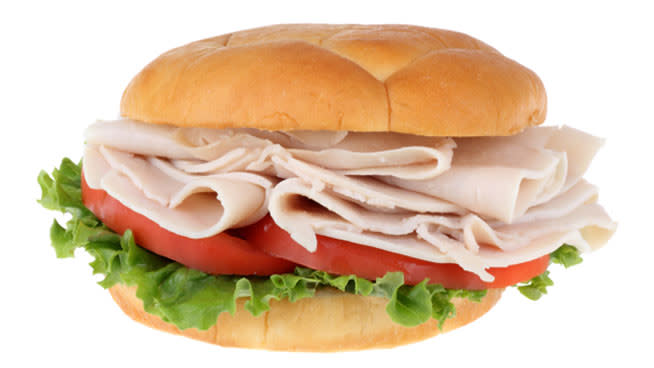How to Hydrate With Food

Proper hydration involves more than just water and Gatorade—much more. Still, many athletes focus on questions like, "how many ounces of water should I drink during a training session," or "how much water should I drink during the day?" An important question they should ask is, "what foods will hydrate me?" Incorporating foods high in electrolytes such as sodium, potassium, magnesium, chloride and calcium are crucial to optimal hydration.
RELATED: Why You Should Add Butter To Your Coffee
The first thing you need to realize is that water alone will not properly hydrate an athlete. Water follows the movement of electrolytes (especially sodium and chloride), meaning it is drawn to locations where those electrolytes are located. Thus, electrolytes play a critical role in maintaining the balance of water throughout the body, including the muscles—whether the body is at rest or at work doing exercise. The bottom line is that electrolytes are the key to opening cells in the body and allowing them to absorb fluid.
Here's a quick breakdown of the major electrolytes and their function:
Sodium: Helps maintain blood pressure, nerve function and muscle function by drawing water into cells.
Potassium: Helps nerves and muscles communicate. Moves nutrients into cells and waste products out of cells while balancing sodium levels.
Magnesium: Required for the proper growth and maintenance of bones, as well as the proper function of nerves and muscles.
Calcium: Helps muscles and blood vessels contract and expand. Secretes hormones and enzymes to send messages through the nervous system.
Chloride: Maintains heart function and pH balance.
Electrolytes lost in high concentrations through sweat include sodium and chloride; electrolytes lost in low concentrations include potassium, magnesium and calcium. All electrolytes work together to maintain fluid balance in the body at rest and during physical activity, so it's important to focus on them as a whole instead of singling out just one.
RELATED: Power Recipes For Vegetarian Athletes
Of course, there are a few myths surrounding electrolytes. The first regards sodium. It has a bad reputation, which causes athletes to avoid salting their food or skimping on foods high in sodium. Here's the thing: athletes need salt to recover. There is an exception, however, for athletes with blood pressure issues. They should speak to their doctor first.
Low levels of sodium can lead to muscle cramps, which are typically thought to be caused by potassium loss. The amount of potassium lost in sweat is likely too low for this to be true. Muscle cramping due to electrolyte imbalance is actually associated with the loss of high amounts of sodium through sweat.
How can athletes incorporate hydrating foods into their daily routines?
Athletes need to eat a meal balanced with all electrolytes to replace losses through sweat, especially after an intense training session. Here are some foods that are high in electrolytes.
Sodium: dill pickle, deli meat, tomato juice/sauce/soup, table salt (1 tsp = 2300mg sodium), soy sauce
Potassium: baked potato (with skin), yogurt, beans, spinach, avocado
Magnesium: spinach, pumpkin seeds, whole grains, avocado, yogurt
Calcium: dairy, dark greens (spinach, kale), broccoli, almonds, sardines
Chloride: tomatoes, lettuce, olives, seaweed, rye
RELATED: Foods That Fight Inflammation
You may have noticed that a few foods contain multiple electrolytes (tomatoes and yogurt, for example). This makes it easier for an athlete to make a meal or snack with all of the electrolytes necessary for recovery. Try this easy burrito bowl or simple stir fry recipe, found on The Fueled Athlete blog.
Other recovery meals loaded with electrolytes include:
Turkey Sandwich: Turkey on whole grain bread (avocado, mustard, tomato) with a dill pickle & yogurt
Sushi: Seaweed appetizer, roll containing fish, avocado and vegetables with light soy sauce
Smoothie : Greek yogurt with berries, spinach and dash of salt
Big Salad: Dark greens, beans, tomatoes, feta cheese, diced turkey, salt and pepper to taste, balsamic dressing
Loaded Potato: Large baked potato with shredded rotisserie chicken breast, black beans, plain yogurt (in place of sour cream), sprinkle of cheese and black olives
This article originally appeared on STACK.com: How to Hydrate With Food

